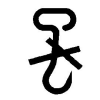| Silk | [German version] |
Table of contents |
|
| General: | ||
| Product information | ||
| Packaging | ||
| Transport | ||
| Container transport | ||
| Cargo securing | ||
Product information
Product name
| German | Seide, Rohseide |
| English | Silk, raw silk |
| French | Soie |
| Spanish | Seda |
| CN/HS number * | 50 ff. |
(* EU Combined Nomenclature/Harmonized System)
Product description
Silk is the name for the protein fibers obtained from the cocoons of various animal species and used as textile raw materials. Artificial silks, on the other hand, are generally cellulose-based and have lost much of their popularity.
Silk comes mainly from the filaments from the cocoon of the silk moth caterpillar (silkworm) (Bombyx mori), whose life cycle extends from the egg stage through the caterpillar stage and pupa stage to the moth stage. Silkworms are fed with fresh mulberry foliage until they pupate. The silk filament forming the cocoon is 3500 – 4000 m long and 25 µm thick. Kiln drying prevents the moth from hatching and thus tearing the silk filament.
The following types of silk are known:
| waste silk, silk waste: also known as flock silk, is spun either by worsted system spinning to produce schappe silk or by the carded yarn spinning system to produce bourette silk. | |
| silk noils: are silk waste used in the textile industry. | |
| sea silk: also known as mussel silk or byssus silk, obtained from mussel fibers. High-quality fibers, but seldom available. | |
| vegetable silk: from filaments obtained from the seeds of foliage plants. Used as fibrous raw material or as stuffing for mattresses, cushions or upholstery, insulating material and the like. | |
| wild silk: comes from the cocoons of wild silkworms; has the same characteristics as silk from domesticated silkworms but is stronger. | |
| Chinese tussah-silk: from which the valuable dress fabric Tsche-Su-Tacha is made. |
Quality / Duration of storage
Silk is normally cream-colored and lustrous. It is relatively resistant to ageing but yellows easily and may lose some of its strength.
Raw silk is yellowish-white to gold-colored due to the sericin (silk gum); it is stiff, rough and lacking in luster.
Degummed silk is white, soft, flexible and has a beautiful silky luster. It does not crumple and is very hard-wearing.
Weighted silk compensates for the weight loss suffered during degumming with metal weighting. Metal-weighted silks may break due to oxidation.
Intended use
Silk is used to produce raw silks for ready-made garments, fancy goods, jersey goods, ties and dress and lingerie fabrics and as sewing and embroidery yarns. It is also used in the chemical and electrical industries (insulating material, such as cable tape) and for industrial fabrics (parachutes).
Figure
(Click on the individual Figures to enlarge them.)
 Figure 1 |
 Figure 2 |
Countries of origin
This Table shows only a selection of the most important countries of origin and should not be thought of as exhaustive.
| Europe | Bulgaria, Greece, Russia, Romania, Italy, France, Mediterranean, Red Sea |
| Africa | South Africa |
| Asia | Main countries of origin: Japan, Korea, China, India, Iran |
| America | |
| Australia |
Back to beginning
Packaging
Raw silk is exported in folding cartons or reels, i.e. as silk filaments wound in skeins. The silk skeins are packaged in bales and wrapped in a double layer of jute fabric and plastic film.
Silk products are packaged in boxes, for example, which are lined with water-resistant paper or tinplate.
| Marking of packages | ||
 Keep dry |
 Use no hooks |
|
Back to beginning
Transport
Symbols
 General cargo |
Means of transport
Ship, truck, railroad, aircraft
Container transport
Standard containers, subject to compliance with lower limits for water content of goods, packaging and flooring.
Cargo handling
In damp weather (rain, snow), the cargo must be protected from moisture, since silk is strongly hygroscopic and readily absorbs moisture.
Do not use hooks for cargo handling, since they may very easily cause damage.
Stowage factor
| 2.83 – 3.39 m3/t (100 kg bales, in jute fabric/plastic film) [1] | |
| 4 m3/t (50 kg bales, in jute fabric/plastic film) [1] | |
| 3.11 – 3.68 m3/t silk in boxes [1] | |
| 2.79 – 3.07 m3/t raw silk in bales [11] | |
| 3.34 – 5.57 m3/t silk waste in bales [11] | |
| 1.53 – 1.81 m3/t silk waste, hydraulically compressed [11] |
Stowage space requirements
The holds/containers must be dry and clean. The stowage space must be away from heat sources. In particular, holds must be free of oily patches. The ship’s pipework must be leak-proof. The bales must not be stowed against sharp edges or rough surfaces.
Segregation
Fiber rope/thin fiber nets (preferred).
Cargo securing
The cargo is to be stowed in such a way that the bales do not slip and become damaged during transport.
Back to beginning
Risk factors and loss prevention
RF Temperature
Silk requires particular temperature, humidity/moisture and possibly ventilation conditions (SC VI) (storage climate conditions).
Favorable travel temperature range: 0 – 30°C [1]
Optimum travel temperature: 20°C [1]
Back to beginning
RF Humidity/Moisture
Silk requires particular temperature, humidity/moisture and possibly ventilation conditions (SC VI) (storage climate conditions).
| Designation | Humidity/water content | Source |
| Relative humidity | 65 – 70% | [1] |
| Water content | 9 – 11% | [1] |
| Maximum equilibrium moisture content | 75% | [1] |
Silk is strongly hygroscopic (hygroscopicity) and has a high swelling capacity. It may increase in volume by 30 – 40%. The plastic wrapping protects from moisture, if impermeable to water vapor.
 Figure 3 |
If the plastic wrapping is not impermeable to water vapor, moisture (seawater, rain, condensation water) may lead to mildew stains, mold and mustiness.
It is particularly important for silk noils to be stowed well away from moist goods.
Back to beginning
RF Ventilation
Silk requires particular temperature, humidity/moisture and possibly ventilation conditions (SC VI) (storage climate conditions).
Recommended ventilation conditions: air exchange rate: 6 changes/hour (airing), if the dew point of the external air is lower than the dew point of the hold air.
Back to beginning
RF Biotic activity
Silk does not display any biotic activity.
Back to beginning
RF Self-heating / Spontaneous combustion
Natural silk is easily distinguished by the ignition test: silk is difficult and slow to ignite (only scorches). The residue forms slag-like pellets and imparts an odor of burning hair. From 170°C fuses together and decomposes (brown discoloration).
Back to beginning
RF Odor
| Active behavior | Silk does not impart any odor. |
| Passive behavior | Do not stow silk in a hold/container together with hides/furs. |
Back to beginning
RF Contamination
| Active behavior | Silk is a very clean cargo. |
| Passive behavior | Contamination by dust, colorants, ores, dirt, rust or due to leakage of accompanying cargo (acids, molasses, glue, fats/oils, lubricants etc.) leads to loss of utility value. |
Back to beginning
RF Mechanical influences
The strictest care must be taken to ensure that no hooks are used in stowing silk bales. They succumb very easily to mechanical damage, such as perforations, tearing or fraying. The bales must therefore not be stowed against sharp edges or rough surfaces in the hold/container.
Back to beginning
RF Toxicity / Hazards to health
No risk.
Back to beginning
RF Shrinkage/Shortage
Silk is at extreme risk from theft, as it is highly valuable and comes in small bundles. The best policy is to transport it in lockers. During loading/unloading in particular, care must be taken to check that the bales, boxes or folding cartons in a container are complete and intact.
Back to beginning
RF Insect infestation / Diseases
The holds/containers must be pest-free, protection from rats being particularly necessary as they may cause immense damage by gnawing. The bights of the silk bundles are arranged at the sides of the bales. If rats gnaw the bundles at this point, the filament of the bundle is divided into a large number of short pieces and the silk is unusable for weaving.
Protection from insects is also essential, since, at the time of metamorphosis, they move from their moist feeding sites to dry incubation and pupation sites, such as silk bales, and may cause damage. Therefore, do not stow silk bales together with foodstuffs and animal feed or hides/furs.
Do not use fresh wooden dunnage, as this could be infested with horntails, which will invade textile bales. The hatching insects will chew their way through any type of textiles.
Silk is not moth-resistant, but it is more so than wool.
Back to beginning
